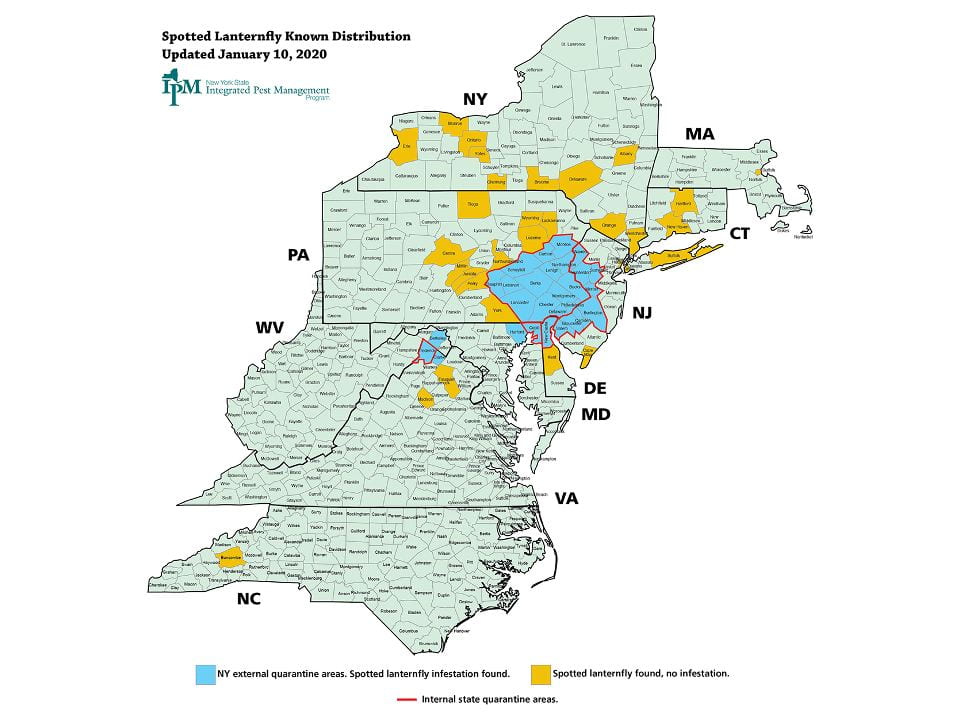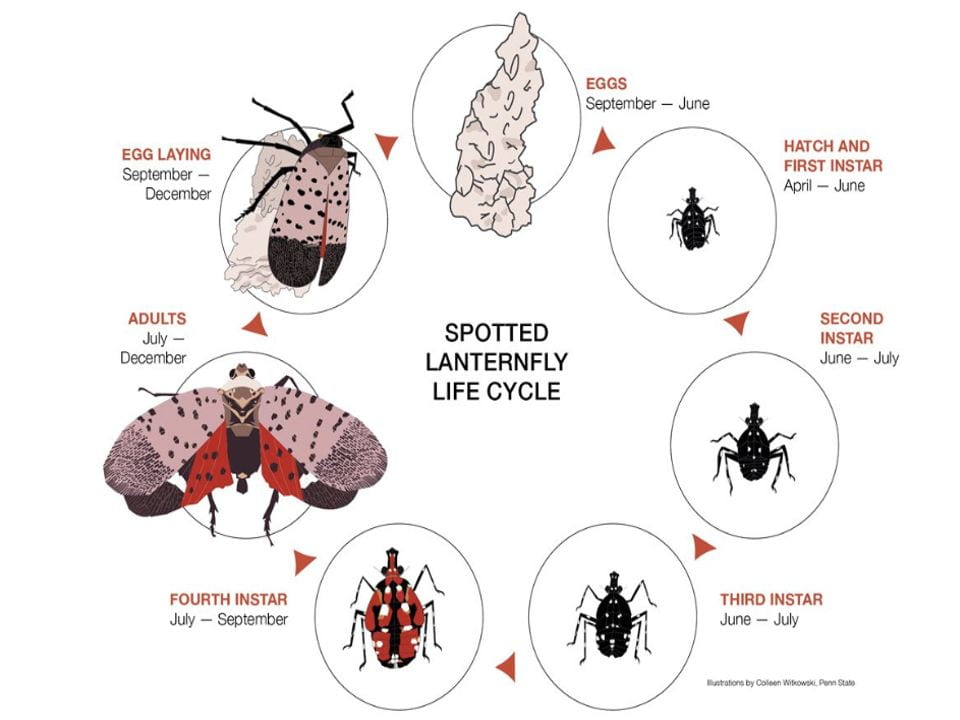The Spotted Lanternfly (SLF) is a newly discovered invasive pest from Asia. It is primarily a pest of trees like apples, cherries, black walnut, poplar, maple, tree of heaven and vines such as grapes and hops but it’s not reported to attack most vegetable crops. This pest was first detected in Berks County, PA in 2014, and has since spread to NJ, DE and VA; it has also been observed in MD, NY, CT and NC. In January 2020, new detections were found in western PA bordering Ohio and in eastern West Virginia (Figure 1).
Damage is caused by inserting large sucking mouthparts into the trunk of the tree or vine and then siphoning out large amounts of sap. Excess sap from either the trunk injury or the planthopper can drip down the trunk and turn dark if infected with sooty mold. No diseases are known to be spread by this insect at this time, but excessive feeding weakens the tree and causes increased mortality during winter.
This pest is a planthopper and as an adult has red and purple wings and nearly one inch long (Figure 2). The immatures resemble stink bugs, being black with white spots when young, and red with black and white spots when older. The overwintering stage is the egg which is laid in masses of 15-30. At this time of the year, the eggs look like elongated brown seeds which can be attached to just about any surface including wood, stone and metal.
While we have NOT seen this pest in Ohio yet, it is within 15 miles of our eastern border and could very likely hitchhike its way into Ohio on a car, truck, trailer, train or boat. If you have tree of heaven on your property, which is one of its favorite hosts, or a vineyard nearby, check the trunks or vines for eggs now or check for nymphs and adults later in the season. If any questionable insects are seen, mark the location, take pictures, and contact your local Ohio State University Extension office or the Ohio Department of Agriculture, Division of Plant Health at 614-728-6400. Do not collect or transport any suspected SLF eggs, nymphs or adults.
For more information and pictures, see USDA’s Pest Alert on this pest: https://www.aphis.usda.gov/publications/plant_health/alert-spotted-lanternfly.pdf
This article was prepared by Jim Jasinski, Dept. of Extension and Celeste Welty, Dept. of Entomology

